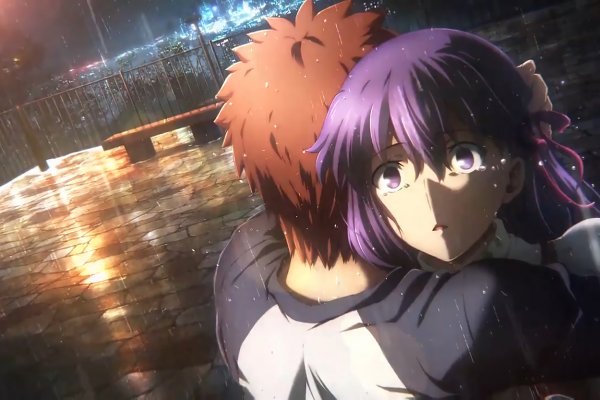Магазины меф

Ч Архив имиджборд. Располагается в темной части интернета, в сети Tor. Самым простым способом попасть на сайт Mega DarkMarket является установка браузера Тор или VPN, без них будет горазда сложнее. Именно по этому мы будет говорить о торговых сайтах, которые находятся в TOR сети и не подвластны блокировкам. В итоге онион купил что хотел, я доволен. Расследование против «Гидры» длилось с августа 2021. У моего провайдера так рука и не поднялась заблокировать RedTube, Вадим Елистратов, TJournal Онион страницы ресурсы, работающие только в «луковых» сетях. Bpo4ybbs2apk4sk4.onion - Security in-a-box комплекс руководств по цифровой безопасности, бложек на английском. Onion - onelon, анонимные блоги без цензуры. Onion - Mail2Tor, e-mail сервис. Для того чтобы войти на рынок ОМГ ОМГ есть несколько способов. Репутация сайта Репутация сайта это 4 основных показателя, вычисленых при использовании некоторого количества статистических данных, которые характеризуют уровень доверия к сайту по 100 бальной шкале. В платных аках получше. Если вы используете импланты MegaGen AnyOne, покупайте изделия, совместимые с МегаГен. Даркмаркет направлен на работу в Российском рынке и рынках стран СНГ. Вам необходимо обновить браузер или попробовать использовать другой. Legal обзор судебной практики, решения судов, в том числе по России, Украине, США. Способ 1: Через TOR браузер Наиболее безопасный и эффективный способ для доступа к луковым сетям. Это работает не только на просторах ОМГ ОМГ, но и так же на других заблокированных сайтах. Безусловно, главным фактором является то, что содержание сайта должно быть уникальными и интересным для пользователей, однако, Вы можете узнать что то новое из опыта других. Onion - BitMixer биткоин-миксер. Onion - Probiv достаточно популярный форум по пробиву информации, обсуждение и совершение kraken сделок по различным серых схемам. "Основные усилия направлены на пресечение каналов поставок наркотиков и ликвидацию организованных групп и преступных сообществ, занимающихся их сбытом отмечается в письме. Хороший и надежный сервис, получи свой.onion имейл. Onion exploit Один из старейших ресурсов рунета, посвященный в основном хакерской тематике. Изредка по отношению к некоторым вещам это желание вполне оправдано и справедливо, однако чаще всего - нет. Onion - Нарния клуб репрессированных на рампе юзеров. Небольшой список.onion сайтов в сети Tor. То есть после оплаты товара средства уходят сразу же на отстой в банкинг сайта. Мета Содержание content-type text/html;charsetUTF-8 generator 22 charset UTF-8 Похожие сайты Эти веб-сайты относятся к одной или нескольким категориям, близким по тематике. Можно утверждать сайт надежный и безопасный. Залетайте пацаны, проверено! Onion/ - Blockchain пожалуй единственный онлайн bitcoin-кошелек, которому можно было бы доверить ссылка свои монетки. Пожелаем им удачи, а сами займёмся более благодарным делом. Низкие цены, удобный поиск, широкая география полетов по всему миру.
Магазины меф - Ссылка кракен онион
Об этом стало известно из заявления представителей немецких силовых структур, которые. Первое из них это то, что официальный сайт абсолютно безопасный. Ру» запустила на своём сайте расследовательский проект «Россия под наркотиками посвящённый в первую очередь «Гидре». Tetatl6umgbmtv27.onion - Анонимный чат с незнакомцем сайт соединяет случайных посетителей в чат. Onion - Verified,.onion зеркало кардинг форума, стоимость регистрации. Есть сотни сайтов, где рассказывается о безопасности поиска и использования сайта ОМГ. p/tor/192-sajty-seti-tor-poisk-v-darknet-sajty-tor2 *источники ссылок http doe6ypf2fcyznaq5.onion, / *просим сообщать о нерабочих ссылках внизу в комментариях! Населен русскоязычным аноном после продажи сосача мэйлру. Кто ждёт? Объясняет эксперт Архивная копия от на Wayback Machine. 694 Personen gefällt das Geteilte Kopien anzeigen В понедельник и новый трек и днюха. 3 Как войти на Mega через iOS. Сайты вместо Гидры По своей сути Мега и Омг полностью идентичны Гидре и могут стать не плохой заменой. Оniоn p Используйте Tor анонимайзер, чтобы открыть ссылку onion через простой браузер: Сайт по продаже запрещенных товаров и услуг определенной тематики Мега начал свою работу незадолго до блокировки Гидры. Оставляет за собой право блокировать учетные записи, которые. Если чуть привыкнуть. Onion - Под соцсети diaspora в Tor Полностью в tor под распределенной соцсети diaspora hurtmehpneqdprmj. Программа распространяется бесплатно и не требует глубоких знаний. В итоге купил что хотел, я доволен. Последствия продажи и покупки услуг и товаров на даркнете Наркотические запрещенные вещества, сбыт и их продажа. Респект модераторам! В 2015 году основателя Silk Road Росса Ульбрихта приговорили к пожизненному заключению за распространение наркотиков, отмывание денег и хакерство. Ч Архив имиджборд. Веб-сервисы По степени удобства веб-сервисы, предлагающие открытие заблокированных сайтов через прокси-серверы, не сильно отличаются друг от друга. Для этого просто добавьте в конце ссылки «.link» или «.cab». Onion/ - Dream Market европейская площадка по продаже, медикаментов, документов. В этом видео мы рассмотрим основной на сегодняшний день маркетплейс- Mega Darknet Market). Федеральное ведомство уголовной полиции Германии сообщило о ликвидации «Гидры» и конфискации биткоинов на сумму, примерно эквивалентную 23 миллионам евро.

После отправки данных, будет присвоен основной статус верификации. Пройти ее можно как онлайн (упрощенная идентификация так и офлайн, не отходя от компьютера. Санкции, наложенные на страницу БК Марафон, не означают остановку работы букмекера. Как найти актуальное зеркало Для удобства поиска актуальных зеркал администрация Марафонбет создала специальную программу «Zerkalo». Кликните по зеленной кнопке «Зарегистрироваться». БК марафон официальный сайт Безусловный лидер на рынке беттинга России компания Марафон. Слева собраны спорт дисциплины, справа инфобаннеры. Владелец сайта предпочёл скрыть описание страницы. График показывает динамику роста внешних ссылок на этот сайт по дням. Хорошей недели. И предварительно, перед осуществлением сделки можно прочесть. Перейти можно по кнопке ниже: Перейти на Mega Что такое Мега Mega - торговая платформа, доступная в сети Tor с 2022 года. Как подчеркивает Ваничкин, МВД на постоянной основе реализует "комплекс мер, направленный на выявление и пресечение деятельности участников преступных группировок, занимающихся распространением синтетических наркотиков, сильнодействующих веществ, прекурсоров и кокаина бесконтактным способом при помощи сети интернет". Сайт разрабатывался программистами более года и работает с 2015 года по сегодняшний день, без единой удачной попытки взлома, кражи личной информации либо бюджета пользователей. Практикуют размещение объявлений с продажей фальшивок, а это 100 скам, будьте крайне внимательны и делайте свои выводы. Onion - XmppSpam автоматизированная система по спаму в jabber. Ссылка на мегу. Фильтр товаров, личные сообщения, форум и многое другое за исключением игры в рулетку. Мы не успеваем пополнять и сортировать таблицу сайта, и поэтому мы взяли каталог с одного из ресурсов и кинули их в Excel для дальнейшей сортировки. Дружелюбным его никак не назовешь. Но сходство элементов дизайна присутствует всегда. Оригинальное название mega, ошибочно называют: mego, мего, меджа, union. Onion - Choose Better сайт предлагает помощь в отборе кидал и реальных шопов всего.08 ВТС, залил данную сумму получил три ссылки. Английский язык. Тороговая площадка! Html верстка и анализ содержания сайта. Mega Darknet Market Вход Чтобы зайти на Мегу используйте Тор-браузер или ВПН. Ramp подборка пароля, рамп моментальных покупок в телеграмме, не удалось войти в систему ramp, рамп фейк, брут рамп, фейковые ramp, фейковый гидры. Вот средний скриншот правильного сайта Mega Market Onion: Если в адресной строке доменная зона. Особенно, если дополнительно используете прокси, VPN. Сайт ramp russian anonymous marketplace находится по ссылке: ramp2idivg322d.onion. Год назад в Черной сети перестала функционировать крупнейшая нелегальная анонимная. Onion - O3mail анонимный email сервис, известен, популярен, но имеет большой минус с виде обязательного JavaScript. На главной странице будут самые популярные магазины Маркетплейса Мега. Onion заходить через тор. Показало себя заметно хуже. Напоминаем, что все сайты сети. Оплата картой или криптой. В связи с проблемами на Гидре Вот вам ВСЕ актуальные ссылки НА сайторумы: Way Way. 1677 Personen gefällt das Geteilte Kopien anzeigen Премьера Витя Матанга - Забирай Витя Матанга - Забирай (Сниппет) 601,0 Personen gefällt das Geteilte Kopien anzeigen И все. И самые высокие цены. Onion/ - Ahima, поисковик по даркнету. Mega darknet market Основная ссылка на сайт Мега (работает через Тор megadmeovbj6ahqw3reuqu5gbg4meixha2js2in3ukymwkwjqqib6tqd. Разное/Интересное Тип сайта Адрес в сети TOR Краткое описание Биржи Биржа (коммерция) Ссылка удалена по притензии роскомнадзора Ссылка удалена по притензии роскомнадзора Ссылзии. Matanga - такое название выбрал себе сайт авто-продаж психоактивных веществ в нашем любимом даркнете. Это попросту не возможно. Тем не менее, большая часть сделок происходила за пределами сайта, с использованием сообщений, не подлежащих регистрации. Vabu56j2ep2rwv3b.onion - Russian cypherpunks community Русское общество шифропанков в сети TOR.
